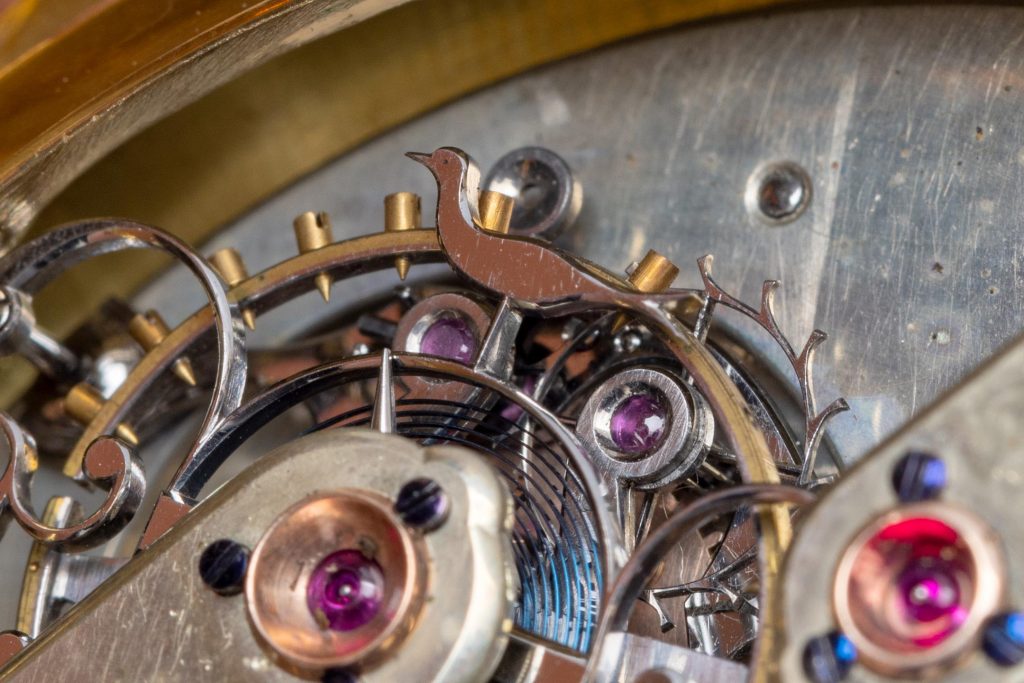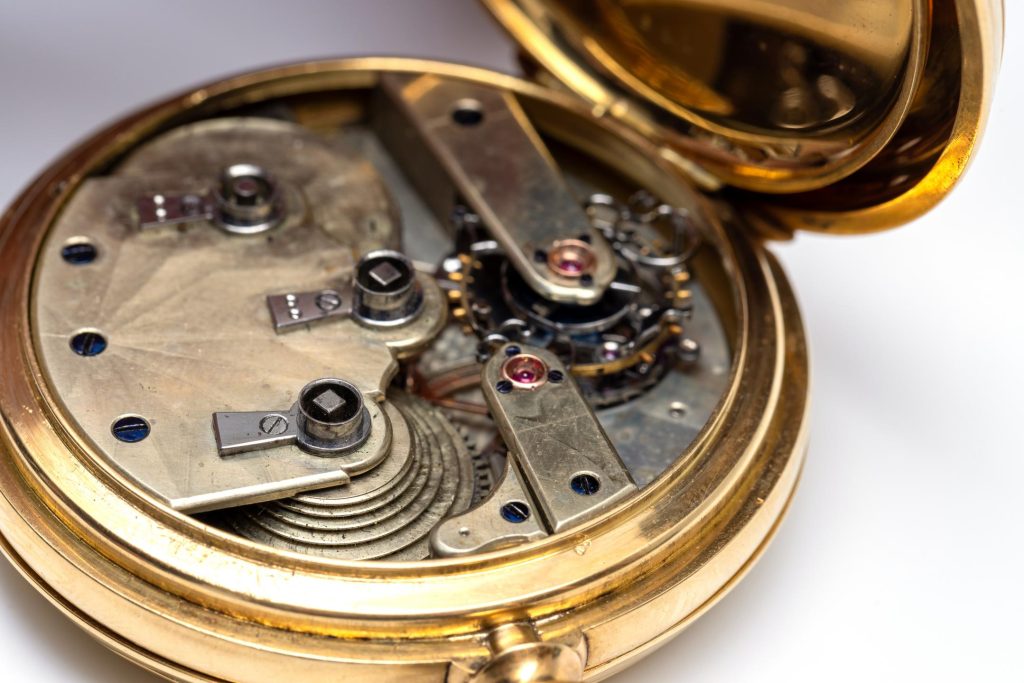A true technical tour de force in the palm of your hand
Abraham Louis Breguet (1747-1823) was already famous as a watchmaker during his lifetime and was equally a genius. His timepieces and watches were of great complexity and accuracy, causing his fame to be blown around the world like wind. He was responsible for many improvements and additions to timepieces to keep the time as accurate as possible.
The 18 k. gold pocket watch under lot number 510 looks like many pocket watches. Like a watch tucked away in almost every dresser in the Netherlands, a forgotten gem.
But,
‘don’t judge a watch by its cover!’.
This watch is equipped with the brilliant invention for which Breguet received a patent in 1801:
The tourbillon.
In short, the tourbillon (French for whirlwind) is a mechanism to reduce the influence of gravity on the movement of a mechanical timepiece. It is an excellent improvement to cancel out the effect of gravity. After all, watches were worn vertically every day for long periods of time.
This watch is equipped with a rest around which a steel cage, the tourbillon. Beautifully made in polished steel, with curling ornaments and a bird. Where the rest rotates back and forth by means of a spring and thus activates the mechanism, the tourbillon revolves around the rest in one minute. Furthermore, this watch has a fusee, which evenly distributes the pressure on the radar so that there is little wear. A fine white enamel dial with Roman numerals shows the time. Everything in a heavy 18 carat gold case of the Savonette type.
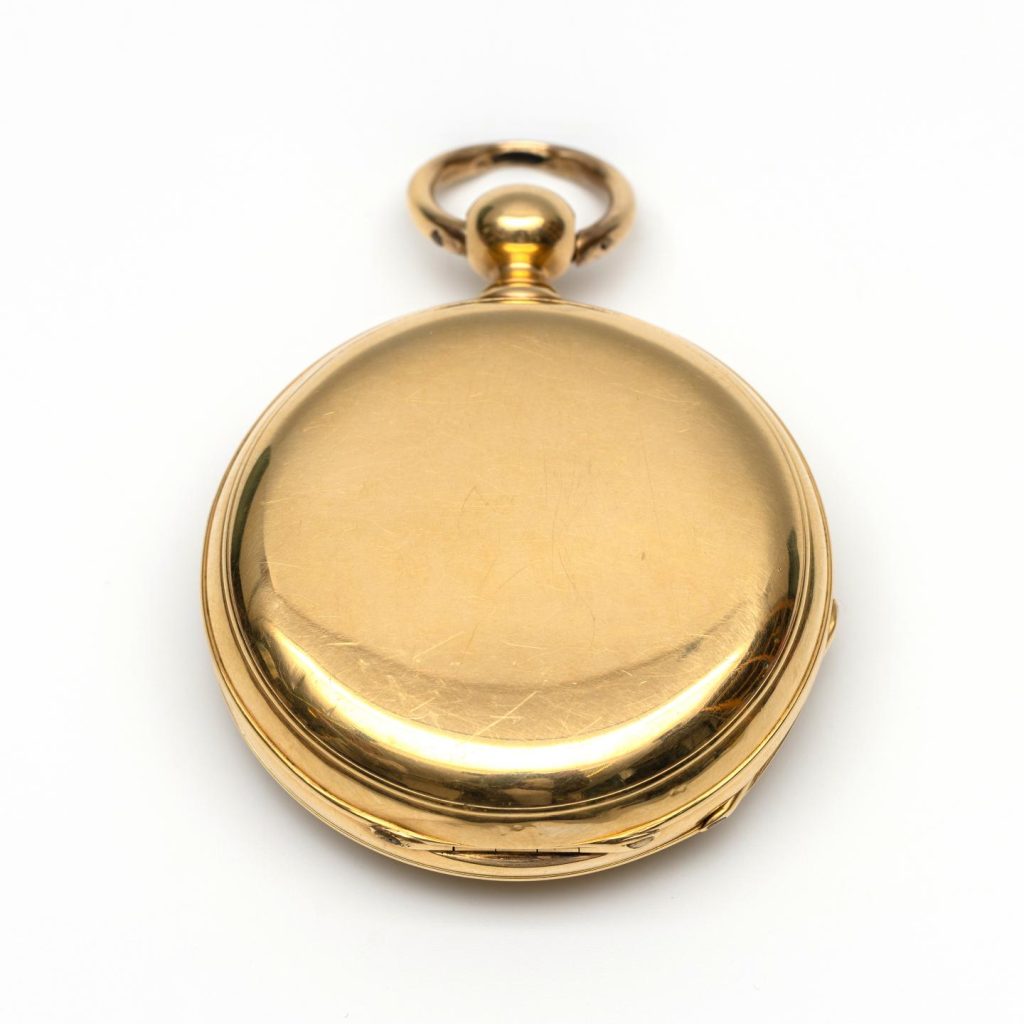
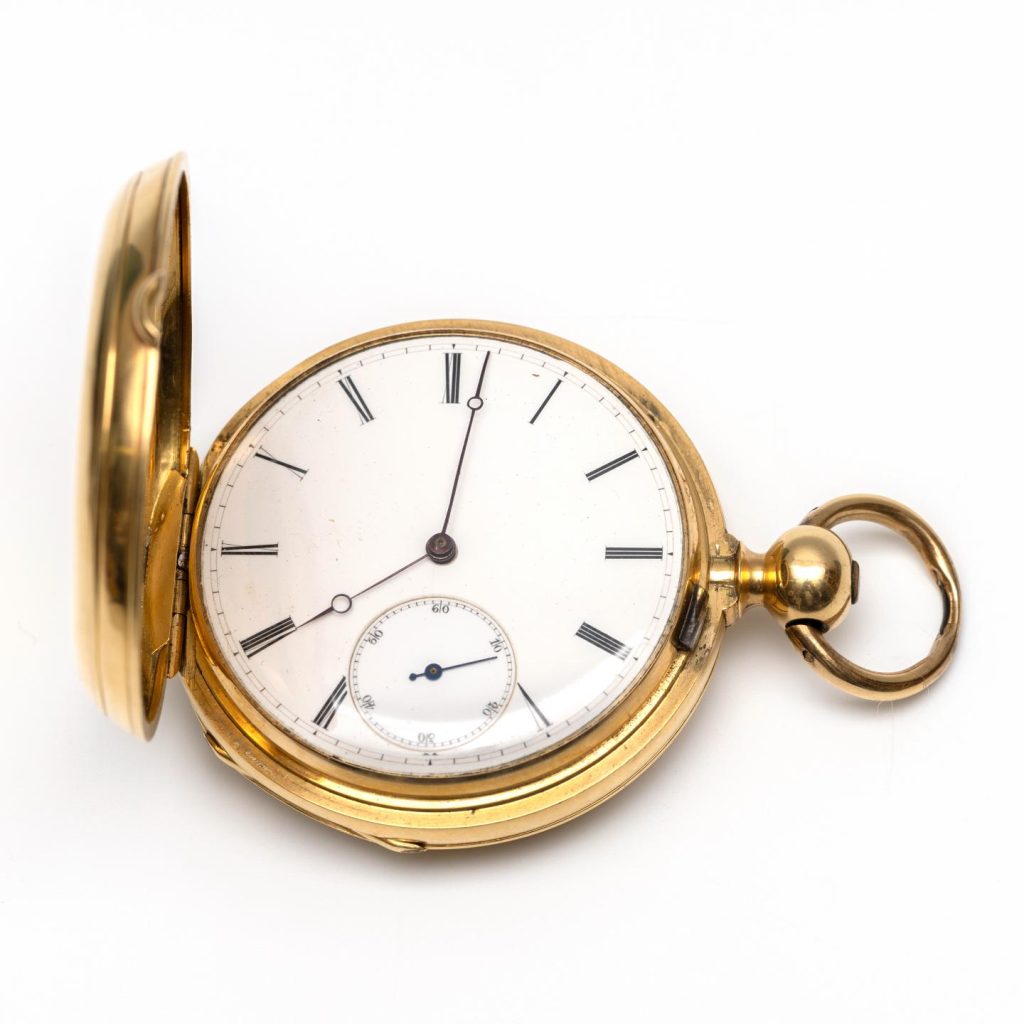
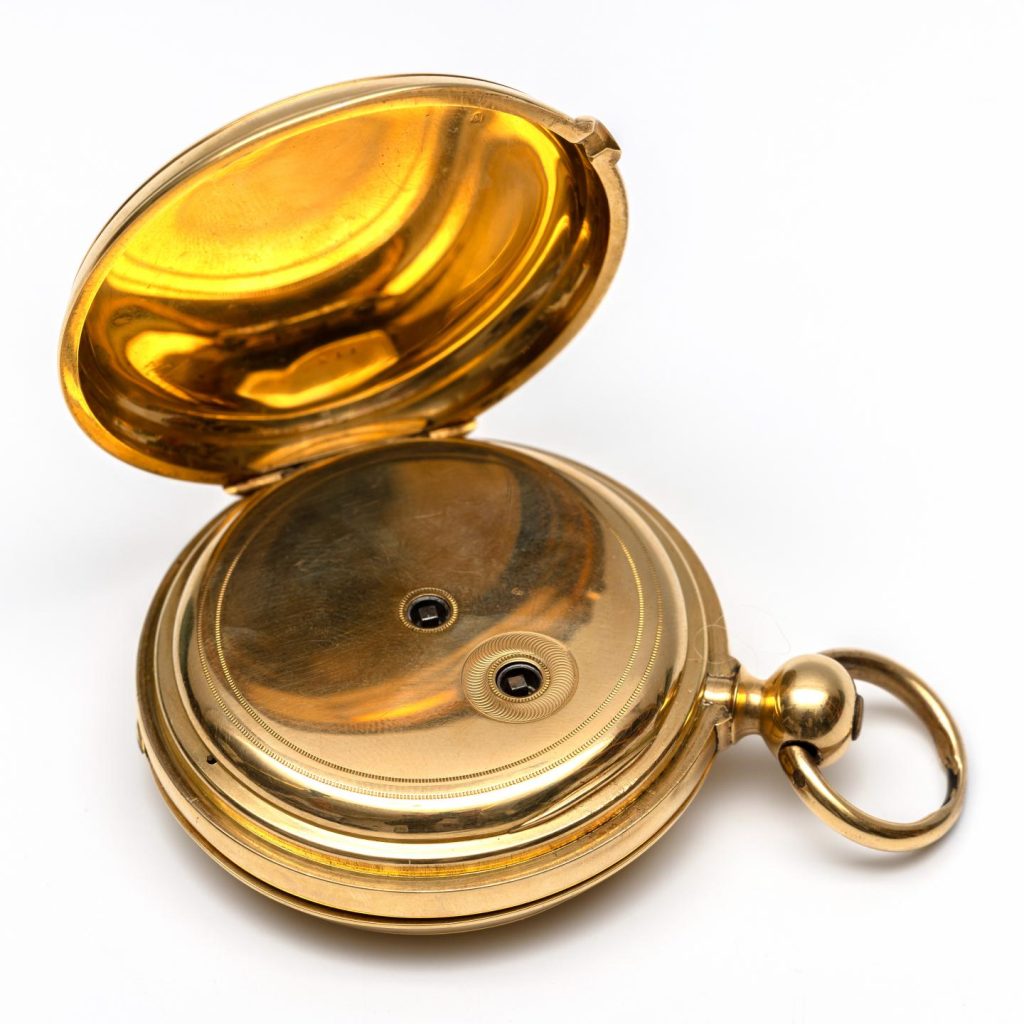

Since the introduction of this extremely complicated mechanism, few watchmakers have been able to use the tourbillon. The difficulty of execution brought the few watchmakers who were able to complete this application a certain recognition of their talents. An estimate of approximately 800! watches made with a tourbillon mechanism in the 19th century by a handful of makers is certainly not unthinkable.
Although this watch is not signed, it has strong similarities with watches made by Henry Delolme. This London maker was active during the 19th century. The movement, platinum and case are similar to a previously sold signed watch by Auktionen Dr. Crott from Manheim in 2015.

